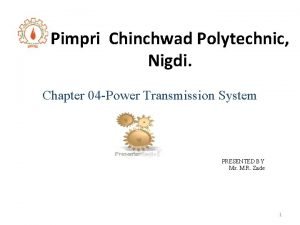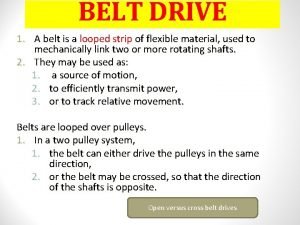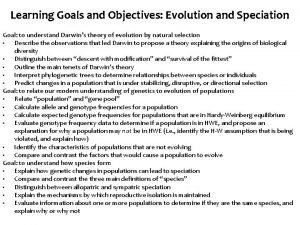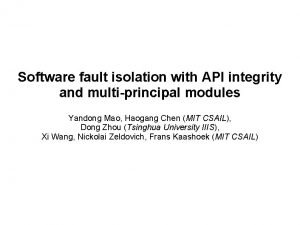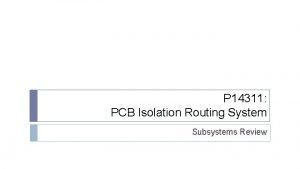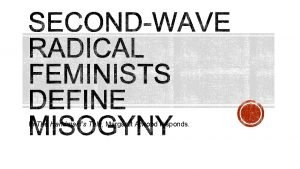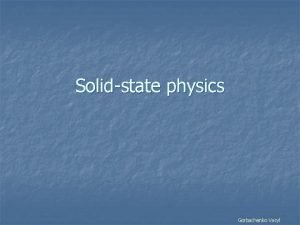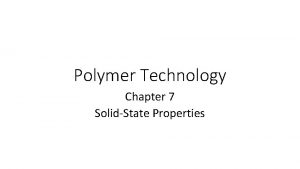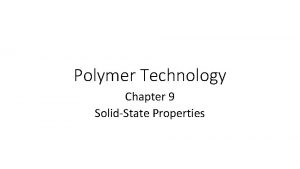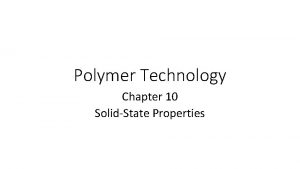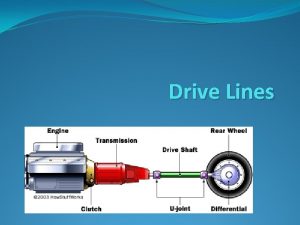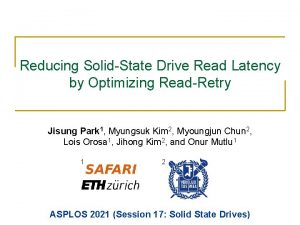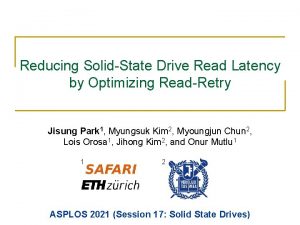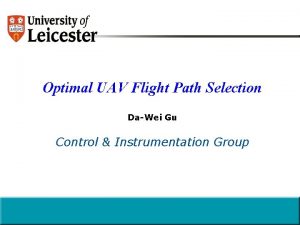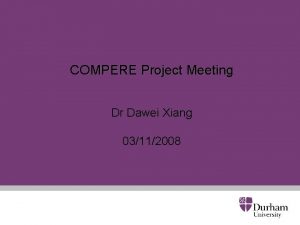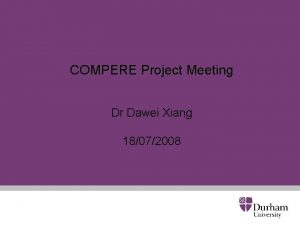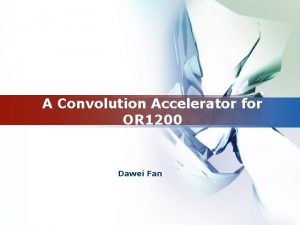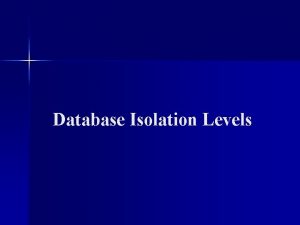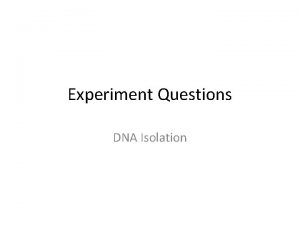VSSD Performance Isolation in a SolidState Drive DAWEI





























- Slides: 29

VSSD: Performance Isolation in a Solid-State Drive DA-WEI CHANG, HSIN-HUNG CHEN, WEI-JIAN SU National Cheng Kung University Proceeding SOSP '11 Proceedings of the Twenty-Third ACM Symposium on Operating Systems Principles

Outline • Introduction • Motivation • VSSD Design • Evaluation • Conclusion

Introduction(1/3) • Shared storage has become a popular storage solution due to its low hardware and administration costs. • Each user's I/O performance can be affected by the I/O activities of the other users. • Many shared storage systems allow users to specify their service-level objectives (SLOs). • To meet the SLOs of the users, I/O performance isolation between the users is required. • The goal of I/O performance isolation is to ensure that the performance experienced by a user is not affected by the I/O activities of the other co-located users.

Introduction(2/3) • Numerous schemes have been proposed to address performance isolation. • For example, credit-based schedulers • user credits according to the I/O cost of the user’s requests • schedule user requests based on the remaining credits of the users. • The accuracy of I/O cost accounting has an impact on performance isolation. • Unfortunately, interference between requests from different users can affect the accuracy of I/O cost accounting, resulting in poor performance isolation. • HDD: disk-head interference • SSDs have been considered as an alternative to HDDs.

Introduction(3/3) • However, there are other types of interference that can occur in SSDs. • queuing delay (QD) interference • garbage collection (GC) interference • A novel framework called VSSD is proposed to address the two types of interference. • FACO I/O scheduler is used to eliminate QD interference. • Vi. SA FTL is used to eliminate GC interference.

Outline • Introduction • Motivation • VSSD Design • Evaluation • Conclusion

Motivation(1/2) • Garbage Collection Interference

Motivation(2/2) • Queuing Delay Interference CH 0 CH 1 CH 2 CH 3 Rb 0 Rb 1 Ra 0 Ra 1 Rb 2 Rb 3 Flash chip 0 Flash chip 1 Flash chip 2 Flash chip 3

Outline • Introduction • Motivation • VSSD Design • Evaluation • Conclusion

VSSD Design(1/9) • FACO I/O scheduler(a fair creditbased I/O scheduler) is used to eliminate QD interference. • Vi. SA FTL is used to eliminate GC interference.

VSSD Design(2/9) •

FACO credit-based I/O scheduler(3/9) • Request dispatching • The FACO scheduler dispatches the next request according to the remaining credits of the users. • Credits => the amount of time that can be used to serve the user’s requests. • Credits are charged on a user for each request issued by the user. • When a user uses up its credits, the requests of the user cannot be served until the user has credits again. • Credits are replenished periodically.

FACO credit-based I/O scheduler(4/9) Pre-charge User 0 Credit: 100 s 1. Select the user with the maximum remaining credits 2. Have not yet used up their credits 3. Have non-empty user queues User 1 200 s User 2 150 s User 3 250 s W W R R W FACO scheduler Vi. SA FTL

FACO credit-based I/O scheduler(5/9) • t 2 t 1 t 0

FACO credit-based I/O scheduler(6/9) •

FACO credit-based I/O scheduler(7/9) •

Vi. SA Flash Translation Layer(8/9) • Traditional mixed-user allocation cause GC interference. • Vi. SA FTL is a page-mapped FTL. • Different from traditional page-mapped FTLs, separate space allocation is adopted in the Vi. SA FTL. • Separate physical space is allocated for each user according to the SLO of the user. • Each victim block contains data belonging to only a single user.

Vi. SA Flash Translation Layer(9/9)

Outline • Introduction • Motivation • VSSD Design • Evaluation • Conclusion

Evaluation(1/7) • The VSSD framework is implemented in a Disk. Sim-based SSD simulator, the SSD extension for Disk. Sim 4. 0.

Evaluation(2/7)

Evaluation(3/7) • Effectiveness of the FACO Scheduler and the Vi. SA FTL

• Effectiveness of VSSD Evaluation(4/7)

• Effectiveness of VSSD Evaluation(5/7)

• Effectiveness of VSSD Evaluation(6/7)

Evaluation(7/7) • Performance under Different Levels of Space Separation

Outline • Introduction • Motivation • VSSD Design • Evaluation • Conclusion

Conclusion • Performance isolation is essential in shared storage systems, and interference between requests from different users on a shared storage system can affect the accuracy of I/O cost accounting, resulting in poor performance isolation. • The FACO scheduler dispatches user requests according to the remaining credits of the users and charges credits according to the I/O cost of each request. • The Vi. SA FTL uses separate space allocation to eliminate garbage collection interference.

Thank you for listening
 Https://slidetodoc.com/
Https://slidetodoc.com/ Google doodle
Google doodle Googlehttps://drive.google.com/drive/my-drive
Googlehttps://drive.google.com/drive/my-drive Http drive google com
Http drive google com Difference between open belt drive and cross belt drive
Difference between open belt drive and cross belt drive Cross belt drive
Cross belt drive Comait
Comait Https drive google com file d 0b8f5bmoit8kbmx
Https drive google com file d 0b8f5bmoit8kbmx The balanced scorecard measures that drive performance
The balanced scorecard measures that drive performance Icosline
Icosline All performance attributes designated as joint performance
All performance attributes designated as joint performance Bars rating scale
Bars rating scale Performance levels
Performance levels End of japanese isolation
End of japanese isolation Pure culture techniques
Pure culture techniques Isolation defination
Isolation defination Contrast by isolation is also described as
Contrast by isolation is also described as Dutch exploration routes
Dutch exploration routes Reproductive isolation
Reproductive isolation Shallow trench isolation
Shallow trench isolation Interpersonal communication is contextual
Interpersonal communication is contextual Lxfi
Lxfi Mechanical engineering design
Mechanical engineering design Dover beach 해석
Dover beach 해석 Isolation device
Isolation device Examples of coevolution
Examples of coevolution Behavioral isolation
Behavioral isolation Shallow trench isolation
Shallow trench isolation Isolation quotes in the handmaid's tale
Isolation quotes in the handmaid's tale Feudal japan hierarchy
Feudal japan hierarchy




